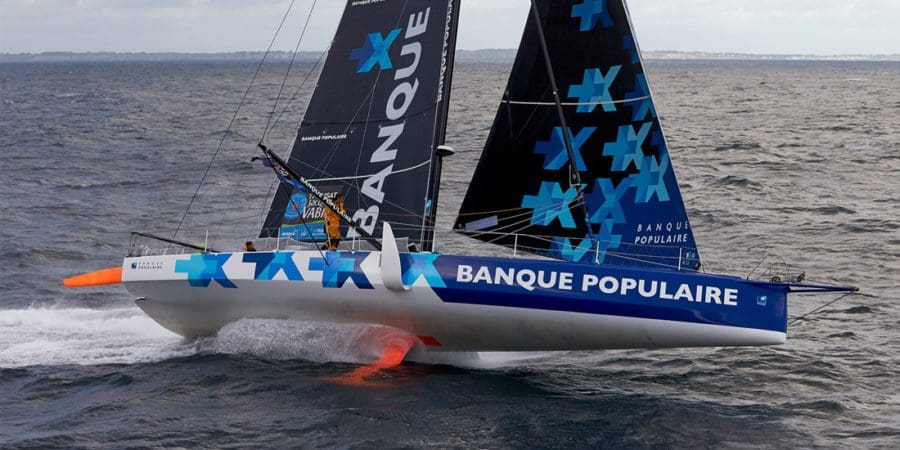All the boats are arriving at Le Havre, ready for the Transat Jacques Vabre. There is great anticipation for the new IMOCA 60, as Banque Populaire VIII, skippered by Armel Le Cléac’h and Erwan Tabarly, and their foils.
IMOCA 60, all about the appendices
Initially conceived to take part in solo round the world races back in 1982 (BOC Challenge), the 60-foot monohulls really took off with the creation of the Vendée Globe in 1989. At the end of that event, a handful of racers (Alain Gautier, Isabelle Autissier, Christophe Auguin, Jean-Luc Van den Heede) set up the International Monohull Open Class Association (IMOCA) recognised in 1998 as an international class by the ISAF (International Sailing Federation).
After some dramatic disasters at sea, the skippers asked designers to come up with some strict safety rules, which have been updated over the years. The shape of the keel and the rig configuration are now strictly controlled with the aim of reducing costs and increasing the reliability of these boats, which have to put up with severe conditions in solo round the world races.
The big change this year is the arrival of foils. Four brand new prototypes will be testing these appendages out on the water in the next Transat Jacques Vabre. They should in theory offer a clear advantage with the wind on the beam, but seem to perform less well in light conditions. The variety of weather conditions they are likely to encounter on the course between Le Havre and Itajaí will give us a clearer picture of the advantages and drawbacks of this newest technological advance before the next Vendée Globe. Some of the older prototypes may modify their configuration, while the new boats may decide to go back to a more traditional set-up.
While these 60-foot boats have undergone major changes over the years, the IMOCA class aims to ensure that research and development leads to lasting solutions, while attempting to limit the environmental impact, with the introduction of wind turbines and solar panels to produce energy on many of the boats.
